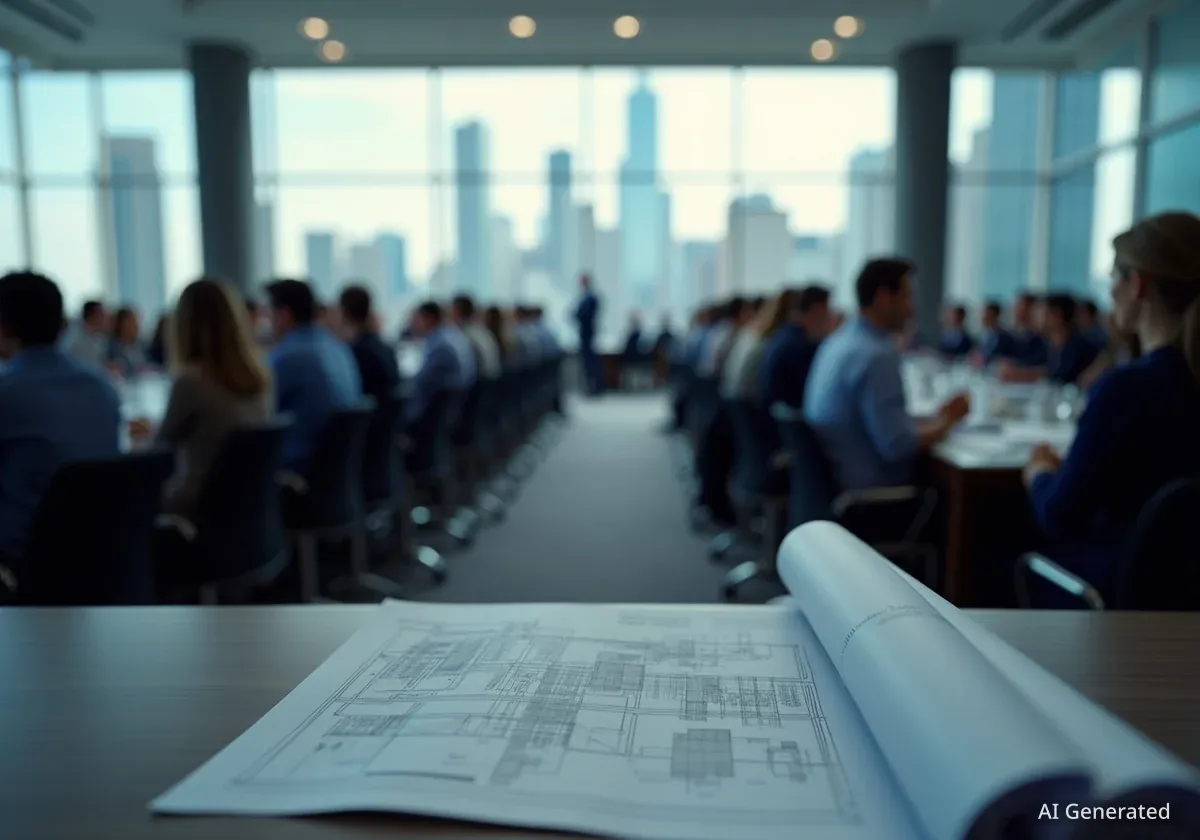Over 250 property and construction professionals gathered at the Bridgewater Hall to discuss the future of building safety compliance in the UK. The event, organised by Project Four and Place North West, focused on developing positive, solution-based strategies for navigating the new regulations established by the Building Safety Act.
Industry leaders acknowledged the significant challenges ahead but emphasized a collective need for improvement and forward momentum. Discussions highlighted a necessary shift from reactive problem-solving to proactive, integrated safety management, with a white paper based on the day's findings set to be published by Project Four.
Key Takeaways
- The industry must transition from manual, paper-based processes to automated, digital systems for consistent compliance.
- A major cultural shift is required, prioritising resident safety and personal responsibility over cost-cutting measures.
- Early and pragmatic engagement with the Building Safety Regulator is crucial for project success.
- Developing comprehensive 'safety case models' for each building is essential for managing risk throughout its lifecycle.
The Drive Towards Digital Transformation
A central theme of the conference was the urgent need for the construction industry to embrace digital technology. Mo Shana'a, CEO of Morta Technology, presented his vision for a joined-up information management system to streamline safety compliance.
Experts agreed that the era of manual, disconnected processes is over. The goal is to move towards automated systems that provide consistent compliance and complete visibility across a project's lifecycle. This ensures greater trust in project outcomes and simplifies regulatory reporting.
Implementing connected information management systems was identified as a critical step. Such systems improve data consistency, allow for better tracking of materials and decisions, and create a foundation for continuous improvement in safety protocols.
Digital Golden Thread
The Building Safety Act mandates a 'golden thread' of information. This is a digital record of a building's data, ensuring that the right people have the right information at the right time to manage safety effectively, from design and construction through to occupation.
Joel Lewis, construction director at Greystar, and Matt Hayward, director at Jon Matthews Architects, were among the speakers who contributed to the discussion on practical implementation. The consensus was that technology is not just an aid but a fundamental requirement for meeting the new standards.
A New Culture of Responsibility and Competency
Peter Apps, author of Show Me the Bodies: How We Let Grenfell Happen, delivered a powerful address on the human consequences of building safety failures. He urged professionals to close the 'distance' between their work and the people who live in the buildings they create.
Apps called for a profound shift in industry culture, moving towards one of personal responsibility for safety. He referenced the ongoing Metropolitan Police investigation into the Grenfell Tower fire, noting its £100 million cost and the slow pace of justice.
"Someone has done something desperately wrong [to cause the Grenfell Tower fire]," Apps stated, adding he would be "shocked if there were no arrests and no cases brought to trial."
This sentiment was echoed in discussions about competency. Speakers like Colin Blatchford-Brown, a BSA technical advisor for Project Four, stressed the importance of reviewing organisational competency, not just the qualifications of individuals.
Defining and Maintaining Competence
The new regulations demand a rigorous approach to competence. This involves several key actions:
- Establishing Clear Criteria: Firms must define competency requirements for every role involved in a building's lifecycle.
- Continuous Evaluation: Individuals must be continuously evaluated against these criteria to ensure standards are maintained.
- Client Education: It is vital to educate clients on their new duties and legal responsibilities under the Act.
- Confidential Reporting: Implementing a confidential system for raising concerns about competency issues was recommended to foster a safer environment.
The overarching message was that the industry must collectively prioritise safety and competency, moving away from a culture that has sometimes been driven by cost-cutting.
Navigating the New Regulatory Gateways
A significant portion of the event was dedicated to practical advice on navigating the stringent new 'gateway' process mandated by the Building Safety Act. This process involves multiple checkpoints where a project must demonstrate compliance before it can proceed.
What are the Gateways?
The Building Safety Act introduced a three-stage gateway system for high-rise residential buildings. Gateway 1 occurs at the planning stage, Gateway 2 before construction begins, and Gateway 3 upon completion and before occupation. Each gateway requires approval from the Building Safety Regulator.
Andy Cox, director at Trigon DM, and Helen Gribbon, director at Renaissance Associates, shared insights on engaging with the regulator. The key advice was to be pragmatic and start dialogue early.
Professionals were advised to engage with the regulator's Multidisciplinary Team (MDT) to get feedback on design proposals well before formal submission. This helps build confidence and avoids costly delays later in the process. It was also recommended that consultants present their schemes directly to the MDT.
Preparing for Gateway 3
Mark Snelling of Safetymark Consultancy Services emphasised that construction control plans must be developed with the end goal in mind: passing Gateway 3. This means meticulous record-keeping and demonstrating how the as-built structure meets safety requirements.
Emma Evans, a regulator partner at Bexley Beaumont, summarised the path forward for the industry.
"We’ve got to keep progressing…being aware of how BSA applies to us, what things we can be doing positively, learning from our peers, learning as we go, and then hopefully we will be able to deliver the types of housing that we obviously are looking to achieve."
The event concluded with a clear understanding that while the Building Safety Act presents complex challenges, it also offers an opportunity for the industry to fundamentally improve its standards and rebuild public trust.





